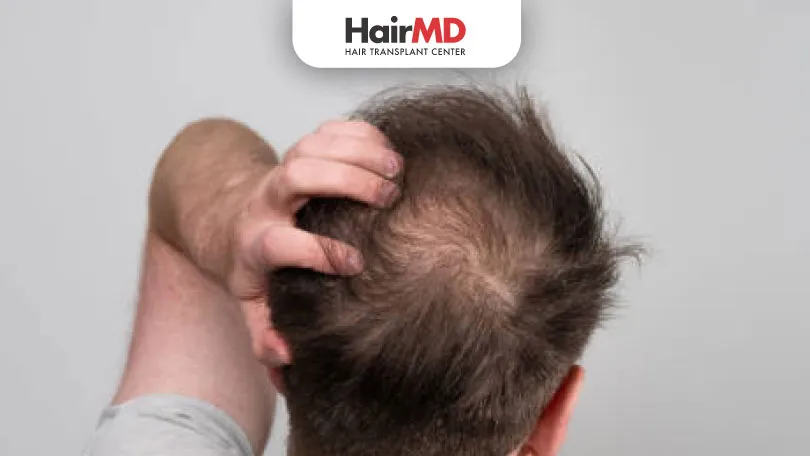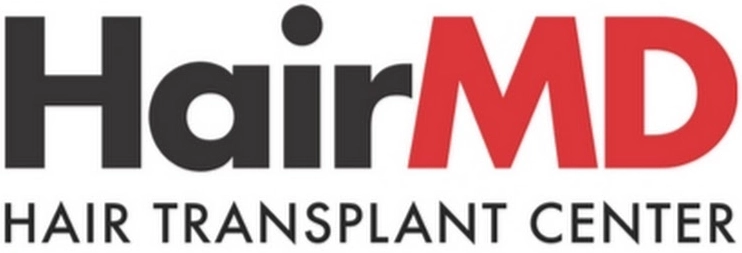19th Oct, 2024

What’s covered in the article?
- What Causes Hair Shedding After an Accident?
- Advanced Treatment Options While Hair Shedding After an Accident
- Managing Hair Shedding After an Accident
- Tips for Maintaining Mental Well-Being
- When to Consult a Dermatologist?
- Conclusion
What Causes Hair Shedding After an Accident?
Experiencing hair shedding after an accident is not unusual, and there are several reasons why this happens:
1. Hormonal Imbalance
Accidents can lead to physical and mental trauma, which may disrupt your body’s hormonal balance. The impact of such incidents often goes beyond immediate injuries, extending to long-term consequences that many might not initially consider. Stress hormones like cortisol can increase significantly, leading to a cascade of effects on various bodily functions.
This hormone surge can influence appetite, sleep patterns, and even the immune system. Among these effects, the hair growth cycle is particularly sensitive, as elevated cortisol levels can disrupt normal hair production, potentially leading to hair thinning or loss over time. Understanding these interconnected impacts can help in managing the broader repercussions of traumatic events.
2. Telogen Effluvium
This condition, known as telogen effluvium, occurs when a large number of hair follicles prematurely enter the resting phase (telogen) of the hair growth cycle. Under normal circumstances, hair follicles cycle through phases of growth (anagen), transition (catagen), and rest (telogen), resulting in the natural shedding of hair.
However, when the body experiences significant stress or trauma, such as surgery, severe illness, or psychological stress, a greater proportion of follicles may shift into the telogen phase at once. As a result, increased hair shedding becomes noticeable a few months following the stressful event, often causing considerable concern. While telogen effluvium is a temporary condition, the shedding period can last several months before the hair growth cycle normalizes, and regrowth begins.
3. Post-Traumatic Stress (PTS)
Post-traumatic stress (PTS) is a psychological condition that manifests after experiencing severe stress or trauma, such as combat exposure, natural disasters, accidents, or personal assaults. It can have a profound impact on both mental and physical health, affecting various aspects of one’s well-being, including hair health.
The mental stress from PTS can exacerbate hair shedding, contributing to a condition known as telogen effluvium. This occurs when stress pushes hair follicles into a resting phase, leading to noticeable thinning and hair loss over time. Managing stress and seeking appropriate treatment can help mitigate these effects and improve overall health.
Advanced Treatment Options While Hair Shedding After an Accident
While traditional methods of managing hair shedding are effective, advanced treatments can offer additional benefits:
1. Laser Therapy
Low-level laser therapy (LLLT) can stimulate hair follicles and enhance hair growth by increasing blood flow and encouraging cellular metabolism in the scalp. It’s a non-invasive treatment that can be done in clinics or with home-use devices.
2. Platelet-Rich Plasma (PRP) Therapy
PRP therapy involves injecting concentrated platelets from your own blood into the scalp. These platelets release growth factors that can stimulate hair growth and improve hair thickness. It’s a promising option for those experiencing significant hair thinning.
Managing Hair Shedding After an Accident
While hair shedding post-accident can be concerning, there are several strategies you can employ to manage and reduce it:
1. Balanced Diet
A diet rich in proteins, vitamins, and minerals is crucial for healthy hair. Incorporate foods such as nuts, dairy products, eggs, and leafy greens, which provide essential nutrients like iron, zinc, and vitamin D.
2. Stress Management
Managing stress is vital for controlling hair shedding. Practices such as meditation, yoga, and breathing exercises can significantly reduce stress levels and, consequently, cortisol levels in the body.
3. Topical Treatments
Consult a dermatologist to explore appropriate topical treatments. They may recommend medications like minoxidil, which require careful monitoring and usage under professional guidance.
4. Oral Supplements
Depending on your specific needs, your doctor may prescribe vitamin supplements to address deficiencies that could be contributing to hair thinning and shedding.
5. Gentle Hair Care
Avoid using heat styling tools such as blow dryers and straighteners until hair shedding is under control. Opt for gentle handling of your hair and use mild, sulfate-free shampoos to prevent further damage.
Tips for Maintaining Mental Well-Being
- Stay Connected: Keep in touch with family and friends who can offer support and encouragement.
- Seek Professional Help: Don’t hesitate to consult a mental health professional if you are struggling emotionally.
- Adopt Healthy Habits: Regular exercise and a balanced diet contribute not only to hair health but overall well-being.
When to Consult a Dermatologist
If hair shedding continues for more than six months or if you notice significant thinning or visible scalp patches, it’s essential to seek professional advice. A dermatologist in Pune can help diagnose the underlying cause and recommend a tailored treatment plan.
Do You Know?
Nearly 250 Patients Visit HairMD
Everyday For Various Hair Concerns?
(Your journey to healthier and fuller hair starts here!)
Meet Our Dermatologists
Conclusion
Hair shedding after an accident can be a complex issue, influenced by both psychological and physical factors. Prioritizing stress management and maintaining a balanced diet are key steps in mitigating hair loss.
If symptoms persist, do not hesitate to consult a dermatologist in Pune for a comprehensive evaluation and treatment. Remember, taking care of your mental and physical health is paramount to recovery. By exploring advanced treatments and adopting a holistic approach to wellness, you can effectively manage hair shedding and promote overall health.
Further Reading
Top Kitchen Ingredients to Boost Hair Growth
Discover the best kitchen ingredients for hair growth! Use coconut oil, onion juice, aloe vera & more to nourish your hair naturally and reduce hair fall.
How to Treat Alopecia Areata at Home: Natural Solutions for Hair Growth
Explore home remedies for alopecia areata to promote hair regrowth and boost confidence from home.
Redensyl vs. Minoxidil: Which is the Better For Hair Growth?
Discover the differences between Redensyl and Minoxidil for hair growth. Learn about their effectiveness, side effects, and which treatment might be better for you.
Biotin-Rich Foods for Natural Hair Growth
Know the best foods rich in biotin to help your hair to grow naturally stronger and healthier by experts from HairMD, Pune
Have thoughts? Please let us know
We are committed not only to treating you, but also educating you.











